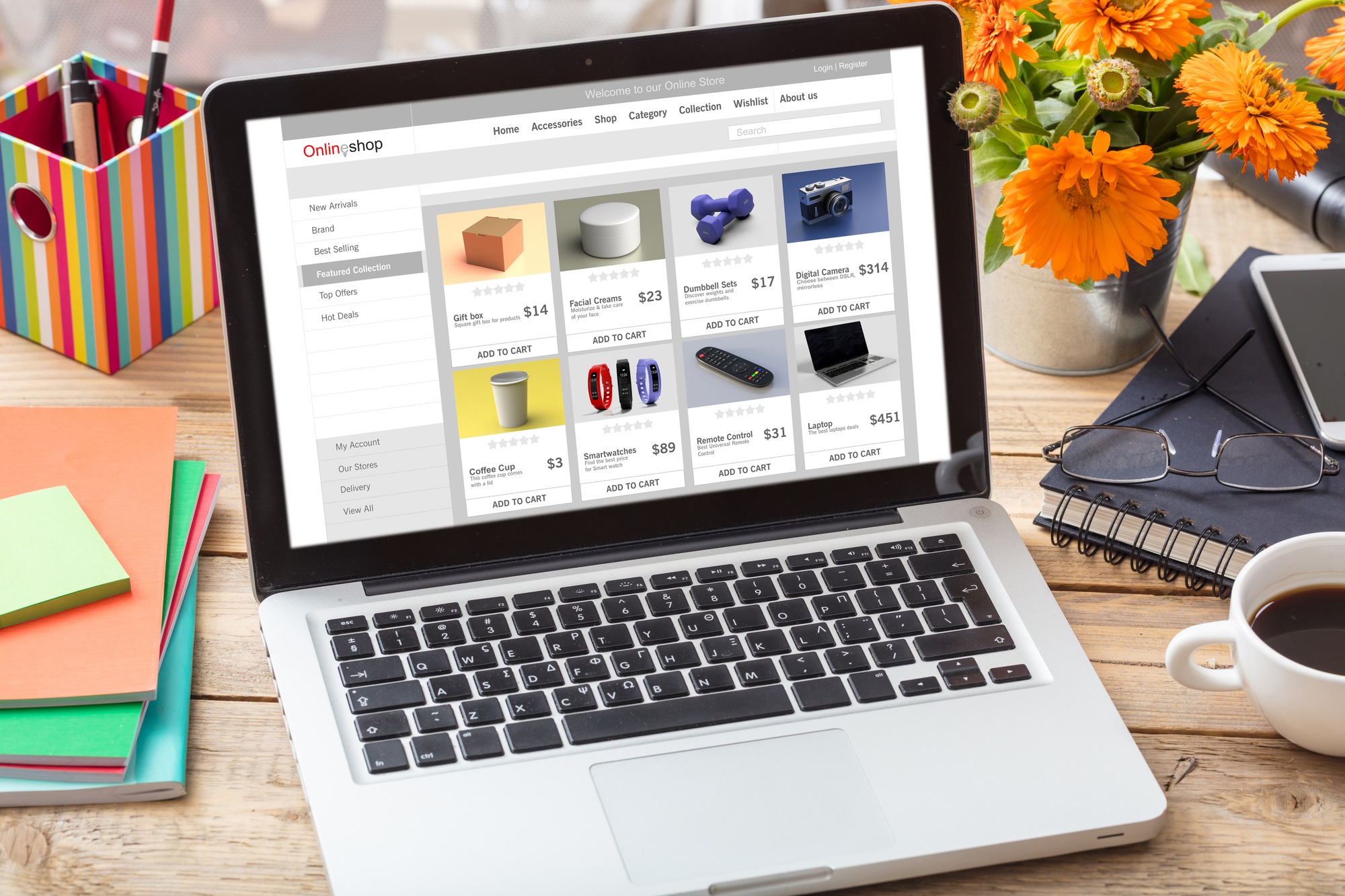Building a credible website is critical for gaining trust from visitors and search engines alike. Imagine your site as a welcoming storefront; a professional appearance filled with valuable information encourages users to explore further. This article unveils effective strategies to increase your website’s credibility.
Implementing secure connections and displaying authentic customer reviews are key steps in establishing a trustworthy online presence. With the right tactics, you’ll not only draw in more visitors but also keep them engaged with your content.
Key Takeaways

- Do HTTPS and showcase security seals to nurture trust—think of it as a strong lock securing your home.
- Craft a seamless user experience with an elegant design, legible fonts, and intuitive navigation—like a well-organized library.
- Harness social proof; customer testimonials and reviews serve as a reliable friend’s endorsement.
- Optimize your content with relevant keywords while ensuring clarity and transparency in your messaging.
Why Website Credibility Matters

Website credibility is like a trustworthy friend; it fosters safety and confidence in visitors. Imagine stepping into a chaotic, unwelcoming store. Would you stick around?
Probably not! Just like that, a website’s design and content play a critical role in shaping its trustworthiness.
To improve your website credibility, prioritize these key elements:
- Professional Design: A sleek, appealing layout with readable fonts and a harmonious color scheme makes a powerful initial impression.
- Genuine Testimonials: Real customer reviews act as social proof, showcasing positive experiences with your business.
- Clear Contact Information: Displaying your physical address and phone number reassures visitors, like handing them a map to your location!
- Secure Connection: An SSL certificate protects user data, a critical step in establishing trust.
- Quality Content: Regularly updating your site with valuable information keeps it new and demonstrates your commitment to your audience.
Why does this matter?
Think of search engines as the internet’s gatekeepers. They favor credible websites, boosting their search engine rankings and leading to greater visibility, increased traffic, and more potential customers.
A user-friendly website free of broken links enhances the visitor experience. When users can easily find what they need, they’re more likely to engage with your content, remarkably improving your conversion rates.
In today’s digital place, building trust is critical. Just as you wouldn’t buy from a stranger, people hesitate to interact with websites lacking credibility. So, ask yourself: is your website a trusted resource?
If not, it’s time for a transformation!
Your website is a reflection of your brand. By implementing these strategies, you can create a site that not only attracts visitors but also turns them into loyal customers.
Building a Credible Website

Building a credible website is like constructing a solid foundation for a house. What elements truly establish credibility?
Let’s explore the essentials that can remarkably improve your website’s trustworthiness.
Initial, examine your website’s design. A professional, visually appealing layout draws visitors in, much like an inviting storefront. Use high-quality visuals and a harmonious color palette to create a welcoming atmosphere. A clean design with readable fonts and sufficient white space simplifies navigation, helping users find what they need effortlessly.
Next, consider social proof. Just as a crowded restaurant suggests quality, a website featuring genuine testimonials and customer reviews builds trust. Highlight these prominently; they act as powerful trust signals that can sway potential customers.
A secure connection is another critical element. Websites using HTTPS and equipped with an SSL certificate reassure visitors that their data is safe. This is critical for sites handling sensitive information. Displaying trust seals from reputable organizations further boosts your credibility.
Clear communication is key. Make your contact information, including a physical address and phone number, easily accessible. This transparency fosters trust, akin to having a friendly store clerk ready to assist.
Regularly updating your site with valuable content is necessary. Think of your website as a garden; it needs ongoing care to flourish. New content keeps visitors engaged and enhances your search engine optimization (SEO), helping you rise in search rankings.
Quality backlinks from credible sites can lift your authority. They serve as endorsements, signaling to search engines that your site is a trusted resource. Just as a friend’s recommendation holds weight, backlinks improve your online reputation.
At last, make sure your site is mobile-optimized. With many users browsing on mobile devices, a responsive design is critical. A site that adapts to different screens improves user experience, leading to higher conversion rates.
By prioritizing these elements, you can create a credible website that not only attracts visitors but also encourages them to return. A trustworthy site is the cornerstone of online success!
Creating High-Quality Content

Creating high-quality content is like building a sturdy bridge that connects your website to its visitors. Just as a well-constructed bridge ensures safe passage, valuable content guides users to the information they seek. But how do you craft content that captivates and builds trust?
- Know Your Audience: Understand your target audience. What questions do they have?
What challenges do they face?
Tailoring your content to meet their needs boosts your website credibility.
- Prioritize Quality: Focus on valuable content rather than just filling pages. Insightful articles that provide solutions position your site as a trusted resource.
- SEO Optimization: Naturally incorporate relevant keywords throughout your content. This enhances your search engine rankings and helps potential customers find you.
- Incorporate Visuals: Use high-quality visuals to break up text and improve engagement. Images, infographics, and videos improve understanding and retention.
- Proofread Diligently: Carefully review your work to catch grammatical errors. A site filled with mistakes can damage your site’s credibility.
Think of your website as a storefront. Would you trust a shop with a cluttered layout or broken displays?
Just like a tidy, organized store attracts customers, a well-designed website with intuitive navigation keeps visitors engaged. Make sure your site is responsive, looking great on both desktop and mobile devices.
Don’t overlook social proof! Display authentic testimonials and reviews from satisfied customers. Real experiences build trust, much like word-of-mouth recommendations. When visitors see others’ positive experiences, they’re more likely to engage with your content.
At last, consider adding trust seals and an SSL certificate to showcase your site’s security. Just as a lock on your front door signifies safety, these features reassure users that their information is protected, enhancing your website’s credibility.
By implementing these strategies, you’re not just creating content; you’re building a reputable online presence. Each piece of content strengthens your brand’s authority and can remarkably impact conversion rates. Remember, every visitor is a potential customer, and your content is the key to opening their trust.
Establishing Authority and Expertise

To improve your website’s credibility, establishing authority and expertise is critical. Imagine your website as a lighthouse, cutting through the fog of the internet. A bright guide of trust invites users to explore your services with confidence.
Begin with quality content. Your site should be a rich source of valuable information that addresses your audience’s needs. Are you answering their pressing questions?
Think of your content as a gourmet meal; it must satisfy their hunger for knowledge. Regular updates keep it new, like seasonal dishes that delight diners.
Next, focus on on-page SEO. Use relevant keywords, craft interesting titles, and make sure smooth navigation. A well-structured site is like an organized store; it encourages exploration rather than frustrating visitors with broken links or confusing layouts. Tools like Google Analytics can help you monitor web traffic and understand user behavior.
Building quality backlinks from reputable sources is necessary. Each link acts as a vote of confidence in your site’s authority. Picture a famous chef endorsing your restaurant; it instantly boosts your credibility! Similarly, being linked by trustworthy websites enhances your site’s trustworthiness.
https://www.youtube.com/watch?v=Pvi_metetxk
Harness the power of social proof. Showcasing authentic testimonials, user reviews, and case studies can remarkably shape how visitors perceive your site. When they see others’ positive experiences, trust builds. It’s like having friends advocate for you at a party; their recommendations can sway opinions.
At last, make sure your website features a secure connection (using HTTPS) and displays trust seals. This not only protects user data but also reassures visitors of your legitimacy. Think of these seals as badges of honor, showcasing your commitment to visitor safety and privacy.
By implementing these strategies—creating high-quality content, optimizing for SEO, building backlinks, showcasing social proof, and ensuring security—you can effectively establish your website’s authority and expertise. This will lead to improved search engine rankings and in the end, higher conversion rates.
Leveraging Social Proof

Leveraging social proof is a powerful way to improve your website’s credibility. Think of social proof as a digital cheerleader, encouraging visitors to trust your brand through the positive experiences of others. Why is this significant?
When potential customers see genuine testimonials or user reviews, it’s like a friend recommending a new restaurant—suddenly, you’re excited to try it!
How can you effectively harness social proof to increase your website credibility? Here are some impactful strategies:
- Collect and Display Customer Reviews: Encourage customers to leave reviews on your site. Showcasing these can remarkably lift your site’s authority.
- Showcase Influencer Endorsements: Partner with trusted figures in your industry. Their endorsements can improve your brand’s credibility, as their followers are likely to trust their recommendations.
- Use User-Generated Content: Motivate customers to share their experiences on social media. Featuring these posts on your website fosters a sense of community.
- Display Trust Badges: Incorporate trust seals and security badges to reassure visitors that their data is protected, remarkably boosting conversion rates.
As you do these strategies, don’t forget authenticity is key. If visitors sense that testimonials are forced or fake, it could backfire. Think of it as a trust bridge; the more genuine the materials, the sturdier the bridge!
Regularly updating your content with new testimonials and reviews keeps your website relevant in search results. This not only aids your SEO efforts but also keeps your audience engaged. Use tools like Google Analytics to monitor how these updates impact your web traffic and conversion rates.
To optimize the effectiveness of your social proof, pay attention to your webpage design. Use high-quality visuals and an intuitive layout. A professional design with a together color scheme and readable fonts enhances user experience, making it easier for visitors to absorb information and feel confident in their decisions.
Leveraging social proof is more than just showcasing positive experiences; it’s about creating an environment where visitors feel valued and secure. By adopting these strategies, you can cultivate a trusted resource that not only attracts potential customers but also transforms them into loyal advocates for your brand.
Technical SEO and Security

Imagine your website as a storefront. If the displays are cluttered and the door is locked, would anyone want to enter?
A well-optimized site with strong technical SEO and security features invites visitors in and builds trust.
Technical SEO involves strategies that help search engines steer your site. Think of XML sitemaps as a roadmap, enhancing crawlability and indexability so your valuable content shines in search results.
Ever clicked a link only to find a broken link? Frustrating, right?
Regularly checking and fixing broken links is necessary. A tidy website, like a well-maintained garden, shows you care about your visitors’ experience.
Security is similarly critical. An SSL certificate secures your connection, much like locking your store at night. A secure website not only protects user data but also boosts your SEO performance, as search engines favor secure sites.
To improve your site’s credibility, consider these strategies:
- Optimize images: Compress images to improve site speed, ensuring faster page loads.
- Display trust seals: Trust seals act like badges of honor, signaling credibility to visitors.
- Use genuine testimonials: Real reviews from satisfied customers provide social proof, enhancing trust.
- Maintain clear communication: Display your physical address and contact info to nurture transparency.
Incorporating high-quality visuals and a professional design can lift user experience. Just as a well-organized store layout guides customers, intuitive navigation helps visitors find what they need quickly, leading to higher conversion rates.
Regularly updating your content is critical. New, relevant content signals to users and search engines that your site is active and trustworthy. Think of it as stocking new products; it keeps customers coming back for more.
By prioritizing these technical SEO and security elements, you can remarkably improve your website’s credibility, establishing it as a trusted resource for your target audience.
Measuring and Improving Website Performance

Measuring and improving your website performance is like tuning a musical instrument; each adjustment enhances the in general harmony. Why do some websites load quickly while others lag?
The answer lies in critical factors like loading time, SEO optimization, and user experience.
Let’s look at website speed. Did you know that a mere one-next delay can cut your conversion rates by 7%? Imagine waiting for a perpetually late friend; you might just leave! To avoid losing potential customers, use tools like Google PageSpeed Insights. This tool identifies broken links and other obstacles that slow your site down.
Next, consider your website’s design. A professional design with readable fonts and an attractive color scheme creates an inviting atmosphere. Think of your website as a storefront; if it’s cluttered or unwelcoming, visitors will simply walk away. Use high-quality visuals and white space to engage users. It’s about crafting a space where visitors feel comfortable and curious.
Mobile responsiveness is also critical. With over 60% of web traffic coming from mobile devices, your site must look sharp and function smoothly on smaller screens. Optimize images and make sure fast loading times across all devices. Compressing images can remarkably increase speed without sacrificing quality.
Another necessary element is social proof. Showcasing genuine testimonials or press mentions builds trust and reinforces your site’s authority. When visitors see positive experiences from others, they’re more likely to stay and explore. Adding trust seals and a secure connection (SSL certificate) further enhances your site’s credibility.
At last, regularly updating your content is critical. Just as a garden flourishes with care, your website thrives on new, valuable content to attract and retain visitors. Use website analytics to track user engagement and refine your strategy. A well-maintained site not only climbs higher in search engine results but also nurtures a loyal audience.
By implementing these strategies, you can remarkably increase your website’s performance and credibility. Remember, a well-optimized site is like a finely-tuned instrument: it resonates beautifully and keeps your audience coming back for an encore!
Avoiding Common Pitfalls

Building a website?
Avoiding common pitfalls is critical for boosting your website credibility. Imagine your site as a storefront: would you trust a shop with a broken window or messy displays?
Your website must radiate professionalism to attract potential customers.
One major pitfall is broken links. Think of them as dead ends on a road; they frustrate visitors and drive them away. Regularly audit your links using tools like Google Analytics to identify and fix these issues, ensuring a smooth journey for your users.
Next, assess your site’s design. Is it visually appealing? A cluttered layout confuses users, much like a messy room makes it hard to find what you need. Do intuitive navigation and readable fonts to guide visitors effortlessly through your content. A clean design with ample white space helps your audience focus on what truly matters.
Another frequent mistake is neglecting social proof. Just as you seek friends’ recommendations before trying a new restaurant, visitors look for genuine testimonials and real reviews to assess your site’s trustworthiness. Showcase these prominently near your products or services to improve conversion rates.
Don’t underestimate the power of mobile optimization. With many users browsing on mobile devices, a non-responsive site feels like a book with tiny print. Make sure your website adapts seamlessly to any screen size, enhancing user satisfaction and boosting your SEO performance.
At last, keep your content new and relevant. Like a magazine releasing new issues, regularly update your website with valuable information. This shows your commitment to your audience and improves your search engine rankings.
By avoiding these pitfalls, you can create a website that stands out as a trusted resource. Remember, initial impressions matter, and a credible website remarkably influences the trust you build with your visitors.
Search Engine Optimization

Search Engine Optimization (SEO) is the magic key to your website’s credibility. Imagine your site as a shop in a busy market. A bright sign and inviting windows draw in customers. Similarly, optimizing your site makes it shine in search results, attracting more website visitors and building trust.
To improve your website credibility, start with quality content. What does this mean?
It’s about delivering valuable information that answers your audience’s questions. Think of it as a treasure map; visitors appreciate the guidance and are likely to return. Include genuine testimonials and press mentions to showcase your expertise, just like a shop displays awards and positive reviews.
What if your website has broken links or slow loading times?
It’s like a shop with a broken door—customers will leave quickly! Regularly check for broken links and optimize images to increase site speed. Use tools like Google Analytics to monitor these elements and improve your SEO performance.
Building trust also means displaying trust seals and securing your site with an SSL certificate. This reassures visitors that their information is safe, much like a shopkeeper locking up valuables at night. Make sure your contact information is clear and accessible. A dedicated contact page with a physical address and phone number enhances your site’s authority.
Don’t overlook mobile responsiveness. With over half of web traffic coming from mobile devices, a site that isn’t mobile-friendly is like a shop that only opens during the day—you’re missing potential customers! A well-structured, visually appealing design with a together color scheme and readable fonts keeps visitors engaged.
At last, focus on link building. Just as word-of-mouth enhances a local shop’s credibility, backlinks from reputable websites can lift your search engine rankings. Prioritize quality backlinks over quantity by securing links from credible websites trusted by your target audience.
By implementing these strategies, you can lift your website’s credibility and transform it into a trusted resource for visitors. A well-optimized website is like a well-run shop; it attracts customers, builds trust, and keeps them coming back!
Summing up

Boosting your website’s credibility is necessary for online success. Strong SEO strategies serve as your best allies in this try. Focus on crafting valuable content that speaks to your audience, securing quality backlinks that function as endorsements, and consistently updating your site to maintain freshness and relevance. These actions build trust with visitors and improve your search engine rankings. A credible website acts like a magnet, attracting more visitors and potential customers. Adopt these strategies now and watch your website thrive!
Frequently Asked Questions

What role does website design play in establishing credibility?
A clean, user-friendly design enhances trust, making visitors more likely to engage and return, boosting your site’s credibility.
What are some effective strategies to improve website credibility?
Publish authoritative content, obtain quality backlinks, optimize on-page SEO, and update regularly to increase credibility.
How can user testimonials improve my website’s trustworthiness?
User testimonials act as social proof, boosting trust and credibility by showing real experiences and satisfaction from your customers.
Image Via Envato: mypics, doralinsamuel, rawf8, nateemee, photobyphotoboy, itchaznong, sonyashna, Media_photos, OksaLy, Ngampol7380, LightFieldStudios, denismuse777



